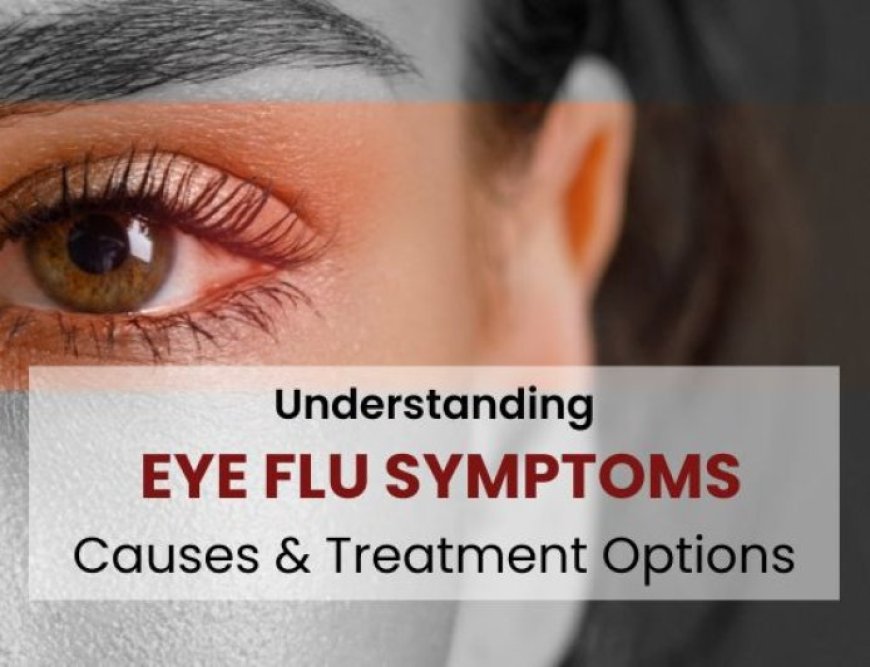Widely spread bacterial and viral disease eye Flu
This eye flu is usually the result of a viral infection. The most common viruses responsible for conjunctivitis include adenoviruses, enteroviruses, and herpes simplex viruses. These can spread easily via direct contact, respiratory droplets, or contaminated objects - though certain risk factors such as overcrowded environments, poor hygiene practices, and compromised immune systems may increase their transmission risk factors. Sensitivity to Light, A few individuals may experience sensitivity to light, known as photophobia. Blurred Vision: In rare cases, it can cause temporary blurred vision or a gritty sensation in the eyes.Home Remedies for Eye Flu Saline Solution, Warm Compresses, Tea Bags, Proper rest and sleep.Medications For This Eye Problem -Pain Relievers Antihistamines, Nonsteroidal Anti-Inflammatory Drugs (NSAIDs)for Managing Discomfort and Itching Avoid rubbing your Eye Putting a cool damp cloth or cold compress on the eyes may provide comfort from itching, Avoid smoke dust and other sources that could aggravate symptoms. Follow your doctor's orders when using prescribed eye drops or ointments so that methods are followed to avoid the viral infections causing eye flu.

Eye flu widely spread disease caused by bacterial infections.
(Widely spread disease around India due to viral and bacterial infections )
Understanding Eye Flu Symptoms, Causes And Treatment Options.
Introduction
The eyes are the most sensitive organ of our body, but eye health is often neglected in today’s fast-paced world. We are constantly surrounded by screens, digital devices, and environmental pollutants that can lead to various eye-related issues. One such problem is “eye flu,” known as viral conjunctivitis. During the rainy season, viral and bacterial infections are prevalent, and one of the results is eye flu. Viruses, bacteria, allergens, and environmental factors can cause this condition. Here, we will explore the eye flu symptoms, its causes, prevention, and treatment options.
Symptoms
- Redness And Irritation. Redness and irritation are the primary eye flu symptoms. ...
- Watery Eyes. ...
- Sensitiveness To Light. ...
- Discharge From The Eyes. ...
- Gritty Sensation. ...
- Crusting Of Eyelids. ...
- Swelling Of Eyelids. ...
- Discomfort While Blinking.
Causes of eye flue
viral or bacterial infections, allergies, or exposure to certain environmental irritants are the common cause of conjunctivitis
Viral conjunctivitis is one of the most common eye flu causes. The primary eye flu reason for viral conjunctivitis is usually triggered by adenoviruses
Bacterial conjunctivitis is another prevalent cause of eye flu. Bacteria such as Staphylococcus aureus, Streptococcus pneumoniae, and Haemophilus influenzae are often responsible for this form of conjunctivitis
Treatment
Applying a clean, warm compress or ice packs to your closed eyes can help soothe discomfort and reduce swelling
Antihistamine eye drops include olopatadine and ketotifen*. Eye drops containing mast cell stabilizers (medications, which prevent the release of histamine, e.g., cromolyn, lodoxamide) have also been found effective in preventing and treating allergic conjunctivitis.
Olopatadine ophthalmic (eye) drops are used to treat itching of the eye caused by a
Preventions and hygiene practices to avoid viral infections
- Soap and Water should be used regularly to clean hands for at least 20 seconds before touching any facial features or eyes, including touching or rubbing them. Touching the eyes directly may introduce viruses and bacteria.
- Utilize Tissues or Elbow: When coughing or sneezing, using tissue or coughing into your elbow will help prevent respiratory droplets from spreading further. Avoid Sharing
- Personal Items: Never share towels, cosmetics, or any other personal items that might come into contact with eyes with anyone. Clean and Disinfect Surfaces: On an ongoing basis, be sure to disinfect surfaces that come into regular contact, such as doorknobs, countertops, and electronic devices.
- Practice Good Contact Lens Hygiene: If you wear contact lenses, be sure to follow proper hygiene practices, such as disinfecting and replacing them according to schedule.
What's Your Reaction?




























































